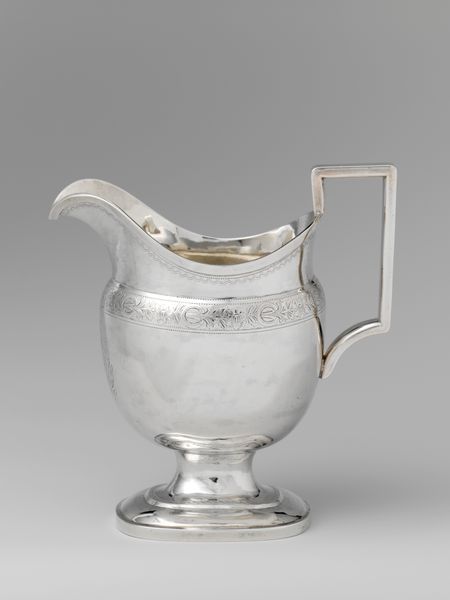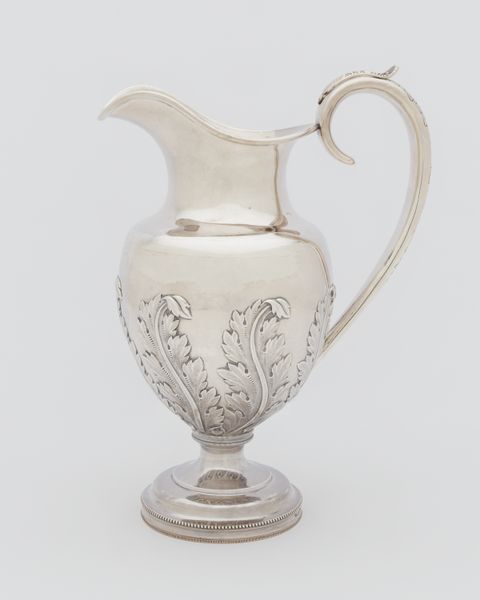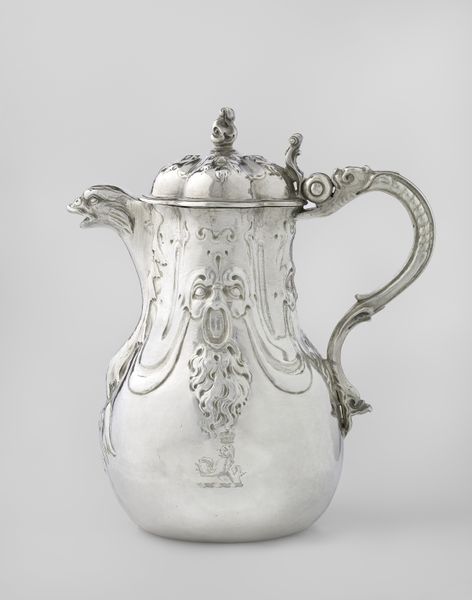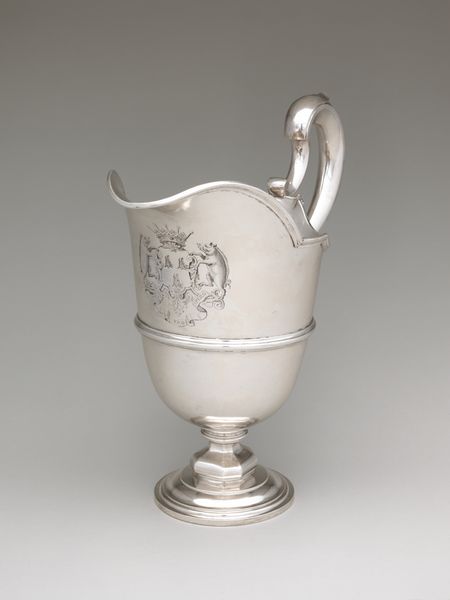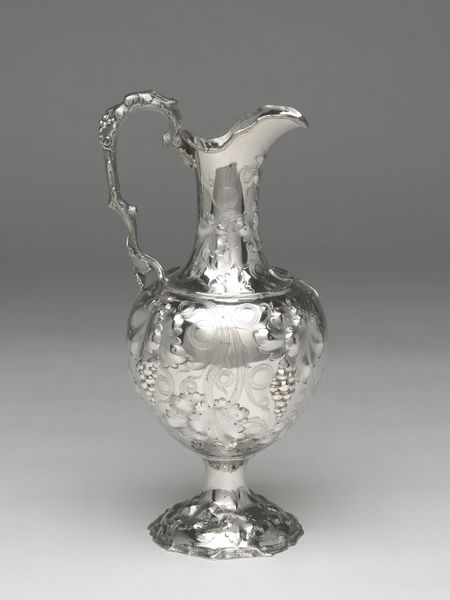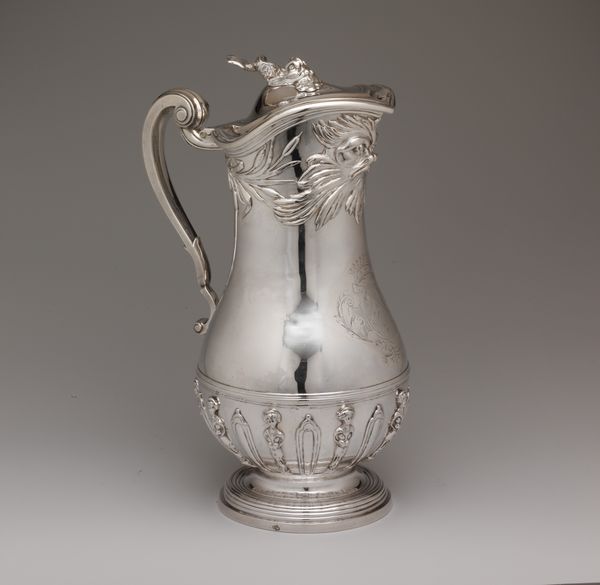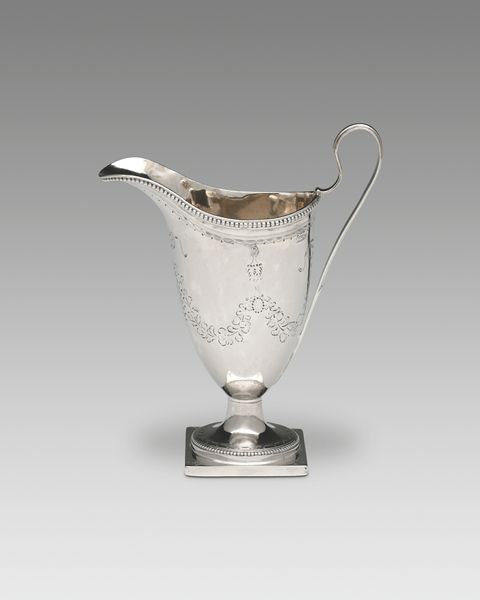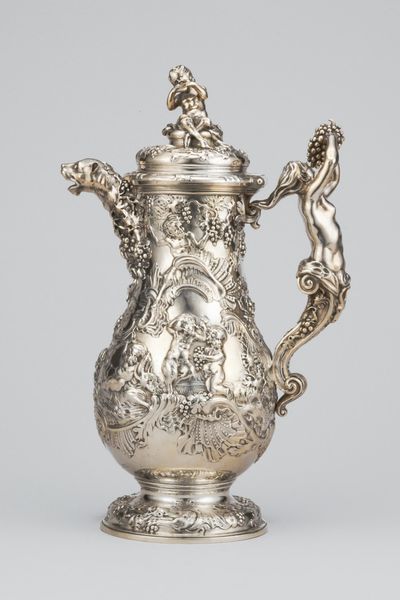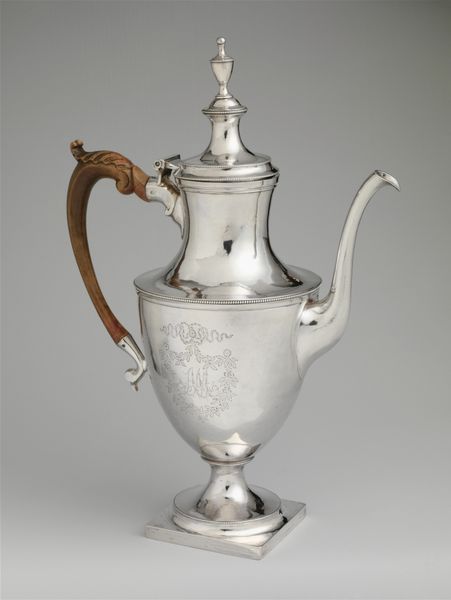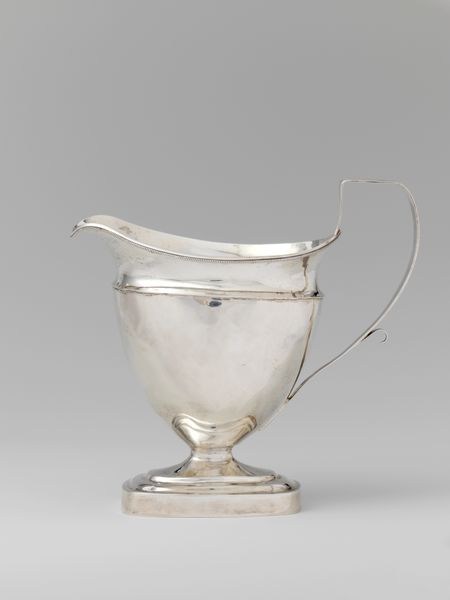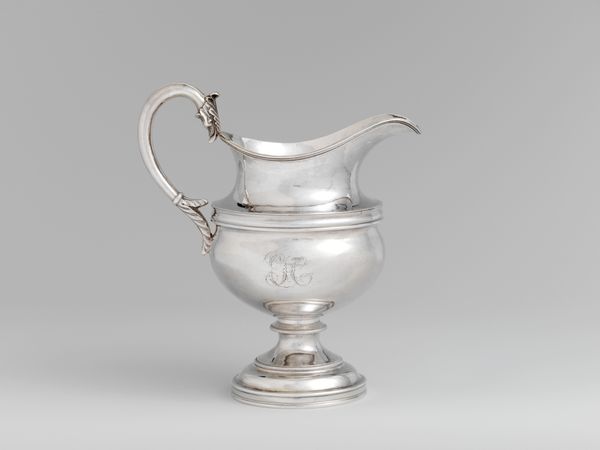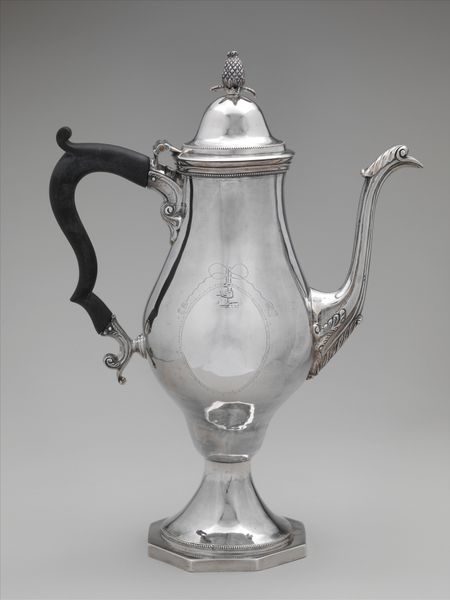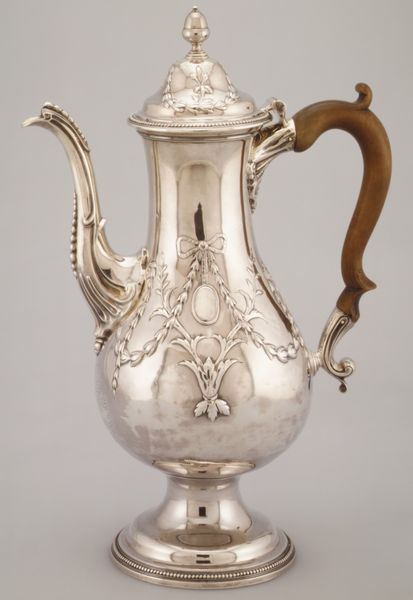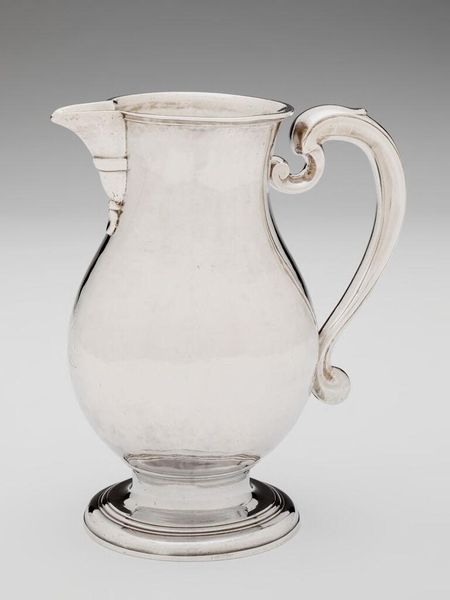
#
studio photography
#
product studio photography
#
3d printed part
#
product photography advertising
#
product fashion photography
#
culinary art
#
product design photgrpaphy
#
wash background
#
metallic object render
#
product photography
Dimensions: height 35 cm, diameter 10 cm, diameter 15 cm, width 24.5 cm
Copyright: Rijks Museum: Open Domain
This silver ewer was crafted by Francisco Enriquez. Notice the dragon-shaped spout and handle, and the lion heads flanking the body of the jug. These aren't mere decorations; they're potent symbols drawn from a deep well of cultural memory. The dragon, a symbol of power and protection, stretches back to ancient mythologies across both Eastern and Western cultures. Here, it evokes a sense of guardianship, perhaps watching over the precious liquid it pours. Similarly, the lion heads, ancient emblems of courage and royalty, lend an air of regal authority to this utilitarian object. Consider how such motifs migrate and transform across centuries. The dragon, once a terrifying beast in medieval lore, becomes in other contexts a symbol of imperial might, and even a benevolent guardian. The lion heads, echoing classical sculptures of gods and emperors, suggest strength and nobility. These animal symbols resurface through time, continually reshaped by our collective consciousness. Their consistent reappearance speaks to a psychological need for connection to the past.
Comments
rijksmuseum about 2 years ago
⋮
This silver ewer was part of the cargo of the Spanish Silver Fleet that Piet Heyn captured by order of the Dutch West India Company in 1628. ‘This ewer comes from the Silver Fleet that Sir Lieutenant-Admiral Piet Heyn captured on 6 September 1618’ was later engraved under the base. The year 1618 is a mistake: it should read 1628.
Join the conversation
Join millions of artists and users on Artera today and experience the ultimate creative platform.
